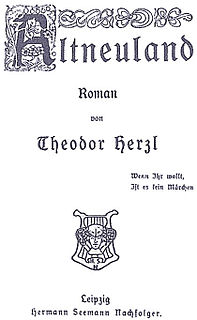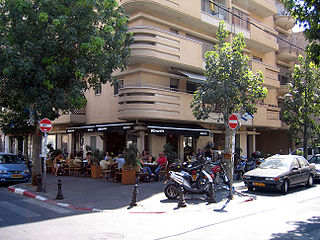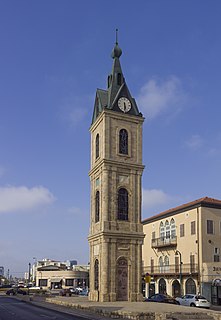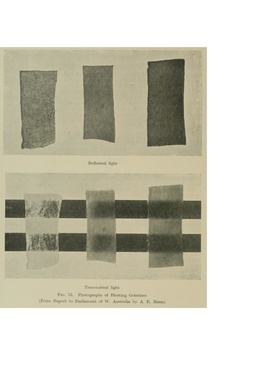
Jerusalem is a city in the Middle East, located on a plateau in the Judaean Mountains between the Mediterranean and the Dead Sea. It is one of the oldest cities in the world, and is considered holy to the three major Abrahamic religions—Judaism, Christianity, and Islam. Both Israel and the Palestinian Authority claim Jerusalem as their capital, as Israel maintains its primary governmental institutions there and the State of Palestine ultimately foresees it as its seat of power; however, neither claim is widely recognized internationally.

Haifa is the third-largest city in Israel – after Jerusalem and Tel Aviv – with a population of 281,087 in 2017. The city of Haifa forms part of the Haifa metropolitan area, the second- or third-most populous metropolitan area in Israel. It is home to the Bahá'í World Centre, a UNESCO World Heritage Site and a destination for Bahá'í pilgrims.

The Yishuv or Ha-Yishuv or Ha-Yishuv Ha-Ivri is the body of Jewish residents in the land of Israel prior to the establishment of the State of Israel. The term came into use in the 1880s, when there were about 25,000 Jews living across the Land of Israel, then comprising the southern part of Ottoman Syria, and continued to be used until 1948, by which time there were some 630,000 Jews there. The term is used in Hebrew even nowadays to denote the Pre-State Jewish residents in the Land of Israel.

The Old New Land is a utopian novel published by Theodor Herzl, the founder of political Zionism, in 1902. It was published six years after Herzl's political pamphlet, Der Judenstaat and expanded on Herzl's vision for a Jewish state in the Land of Israel, which helped Altneuland become one of Zionism's establishing texts. It was translated into Yiddish by Israel Isidor Elyashev, and into Hebrew by Nahum Sokolow as Tel Aviv, a name then adopted for the newly founded city.

The 1929 Arab riots in Palestine, or the Buraq Uprising, also known as the 1929 Massacres, refers to a series of demonstrations and riots in late August 1929 when a long-running dispute between Muslims and Jews over access to the Western Wall in Jerusalem escalated into violence. The riots took the form, in the most part, of attacks by Arabs on Jews accompanied by destruction of Jewish property. During the week of riots from 23 to 29 August, 133 Jews were killed and between 198–241 others were injured, a large majority of whom were unarmed and were murdered in their homes by Arabs, while at least 116 Arabs were killed and at least 232 were injured, mostly by the British police while trying to suppress the riots, although around 20 were killed by Jewish attacks or indiscriminate British gunfire. During the riots, 17 Jewish communities were evacuated.

Israel Rokach, Honorary CBE was an Israeli politician, Knesset member, and second mayor of Tel Aviv from November 15, 1936 until April 13, 1953.

Florentin is a neighborhood in the southern part of Tel Aviv, Israel, named for David Florentin, a Greek Jew who purchased the land in the late 1920s. Development of the area was spurred by its proximity to the Jaffa–Jerusalem railway.

The Jaffa Clock Tower stands in the middle of the north end of Yefet Street in Jaffa. The tower, built of limestone, incorporates two clocks and a plaque commemorating the Israelis killed in the battle for the town in the 1948 Arab–Israeli War.
Following are timelines of the history of Ottoman Syria, taken as the parts of either modern-day Syria or of Greater Syria as they were subjected to Ottoman rule.
Operation Hametz was a Jewish operation towards the end of the British Mandate of Palestine, as part of the 1948 Palestine war. It was launched at the end of April 1948 with the objective of capturing villages inland from Jaffa and establishing a blockade around the town. The operation, which led to the first direct battle between the British and the Irgun, was seen as a great victory for the latter, and enabled the Irgun to take credit for the complete conquest of Jaffa that happened on May 13.

Abu Kabir was a satellite village of Jaffa founded by Egyptians following Ibrahim Pasha's 1832 defeat of Turkish forces in Ottoman era Palestine. During the 1948 Palestine war, it was mostly abandoned and later destroyed. After Israel's establishment in 1948, the area became part of south Tel Aviv. Officially named Giv'at Herzl, the name of an adjacent Jewish neighborhood, the name Abu Kabir continued to be used. Part or all of Abu Kabir was officially renamed Tabitha by the Tel Aviv municipality in 2011.
Givat Herzl is a neighborhood located in the southern part of Tel Aviv, Israel. It contains an ancient Jewish necropolis which was looted mainly during the late 19th and early 20th centuries.

Menashiya or Manshiyya, was a residential neighborhood of Jaffa, Israel.

Shy Abady is an Israeli artist. Over the years, Abady created “biographical” series, which followed individual figures .Other series addressed historical-political themes .In some other series,, Abady examines the language of art itself and the aesthetic influences and relationships between Western-Christian art and Jewish-Israeli art. Abady's work has been shown in solo and group exhibitions in Israel and abroad.

Events in the year 1938 in the British Mandate of Palestine.

Ajami is a predominantly Arab neighborhood in Tel Aviv-Jaffa, Israel, situated south of Old Jaffa and north of the Jabaliyya neighborhood on the Mediterranean Sea.
The Jaffa riots of April 1936, known to Jews as The Bloody Day in Jaffa, refers to a spate of violent attacks on Jews that began on 19 April 1936 in Jaffa. A total of 14 Jews and 2 Arabs were killed during the riots.





















